
Every cinema buff worth their salt appreciates a well-scripted, beautifully acted dialogue-driven scene. Even so, these same film fanatics would be lying if they didn’t admit to deriving just as much pleasure from a good ol’ fashioned action set-piece as they do from watching a couple of characters yakking on.
And why not? Few things are more thrilling than watching a brilliantly conceived, expertly choreographed and masterfully shot fight or chase unfold on the big screen – especially when the stakes are sky-high! That’s probably why cinematic history is positively jam-packed with blockbuster moments like these – so much so that trying to narrow down a “best of” list can seem like a hopeless endeavour.
But you’re in luck, gentle readers, as we’ve taken it on ourselves to accomplish this seemingly impossible task, and present for your consideration this rundown of the 20 Most Epic Action Scenes of All Time!
20. The Alkali Flat Chase – Stagecoach
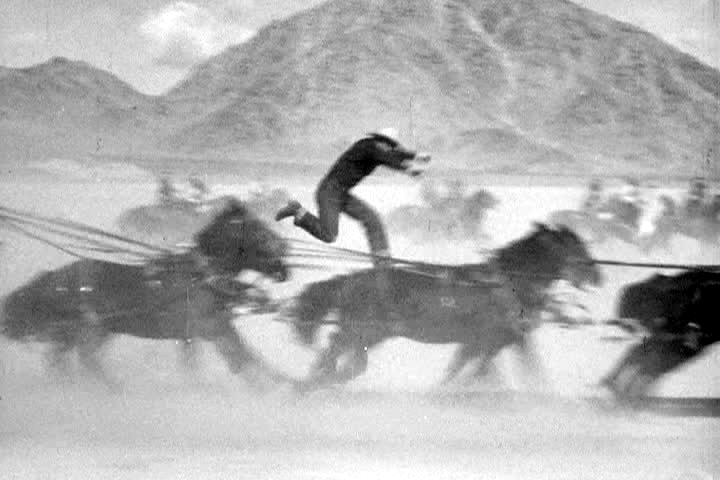
John Ford’s 1939 Western Stagecoach is marred by the same racist Native American stereotypes present in virtually every other “Cowboys and Indians” film from the era. However, if you can set aside the depiction of the Apache tribes – and for plenty of modern viewers, that’s a big “if” – in Stagecoach, you’re in for a treat.
Following the exploits of nine strangers – including John Wayne, in his breakout role – embarking on a dangerous journey through Apache territory, Ford’s movie is filled with impressive set-pieces. Of these, the stand out has to be the Alkali Flat Chase, which sees our wildly outnumbered heroes forced to fend off an Apache war party during a prolonged pursuit.
The stuntwork here – especially by the horsemen portraying the Apache – is first rate, and Ford does a fine job of keeping the action gripping, given how long the scene takes to unfold.
Biggest moment: Down to their last bullet, things are looking pretty dire for our intrepid travellers, until the cavalry arrives, in the form of the US Army’s 6th Regiment.
19. The Battle Of Bloody Porch – The Wild Bunch
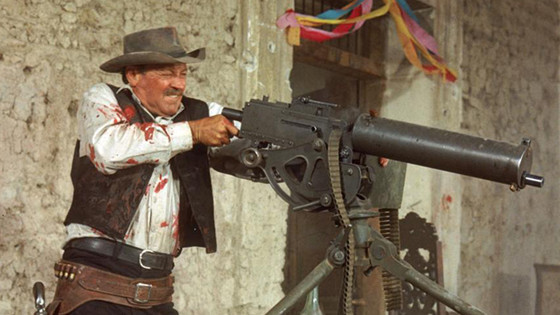
Director Sam Peckinpah’s name is synonymous with the more violent wave of Western movies that cropped up in the 1960s, and his 1969 effort The Wild Bunch suggests this is an earned reputation. Centred around the efforts of a band of past their prime outlaws eager to make one last score and retire, this revisionist tale is filled with unsavoury characters not above killing in cold blood.
The bloodshed reaches its apex when the gang comes up against the Federales during the film’s climactic Battle of Bloody Porch. Here, Peckinpah recreates the pandemonium of a pitched gunfight by using many techniques considered novel at the time: rapidly intercutting between different angles of the same shot and introducing slow motion footage amidst the otherwise frenetic action.
The finished product is as bloody as the censors of Peckinpah’s day would allow, and raised the bar in terms of what audiences would expect from shoot-out sequences going forward.
Biggest moment: William Holden’s Pike Bishop unleashes the machine gun, mowing down anyone unlucky to be caught in his line of fire.
18. The Train Wreck – The General
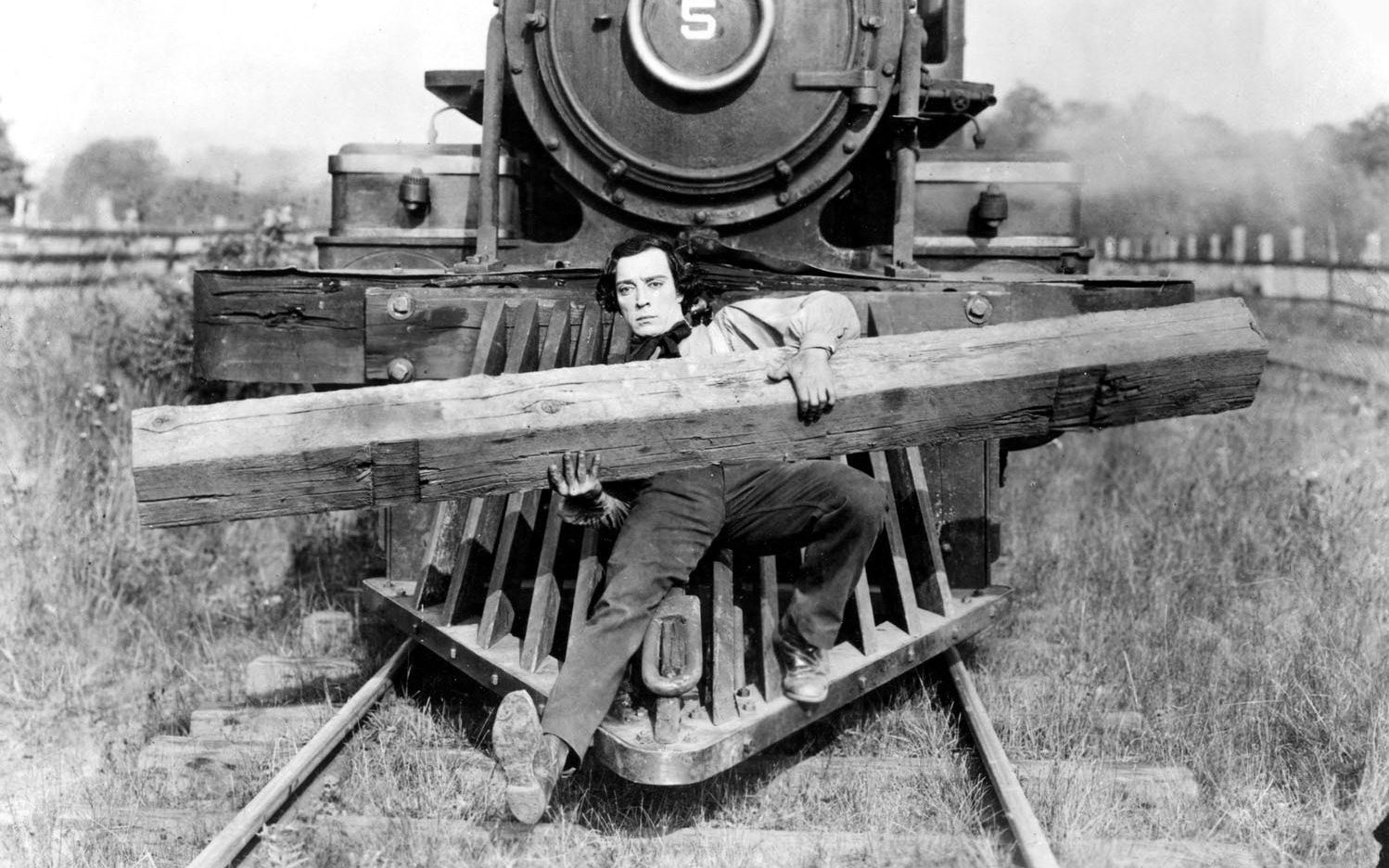
The General contains the most expensive set-piece of the Silent Movie era – steam engine The Texas crashing into a river – which cost the (for-the-time) astronomical figure of $42,000! Screen legend Buster Keaton and co-director Clyde Bruckman oversaw this audacious undertaking, inspired by the real-life story of the “Great Locomotive Chase” during the American Civil War.
The lead-up to the train wreck is just as thrilling, with Keaton performing his trademark feats of physical derring-do. The famously courageous actor repeatedly risked his life to make shots of character Johnnie Gray in various precarious situations – including clinging to the cow-catcher on the front of the train – a reality.
But even these hair-raising stunts pale in comparison to the grand finale, when a burning bridge buckles under the weight of The Texas, sending it plummeting to the bottom of the riverbed below.
Biggest moment: When an actual, really-for-real locomotive goes in the drink; they don’t make movies like this any more (probably for good reason).
17. The Hallway Fight – Oldboy
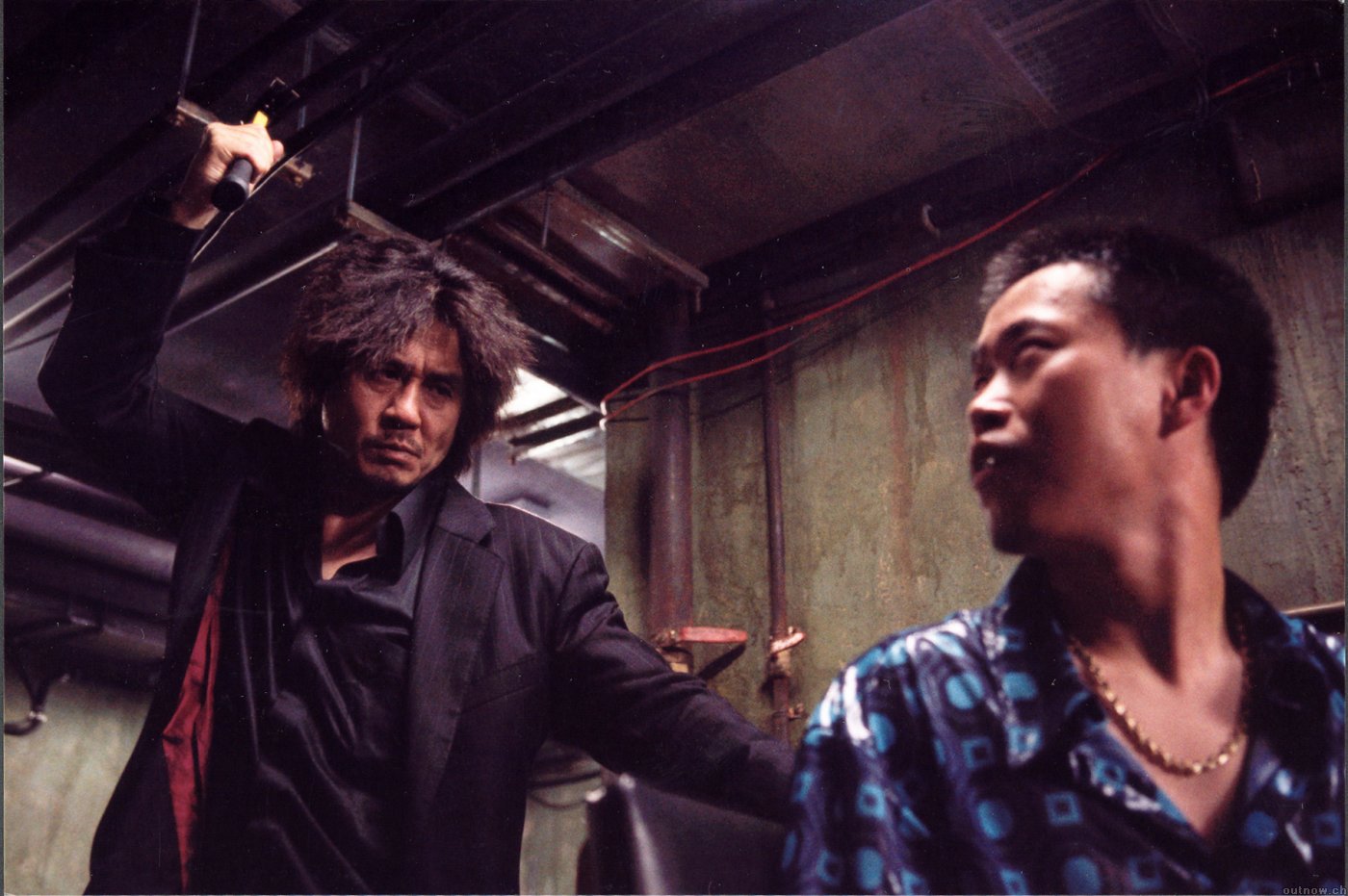
There’s a delightful scrappiness to the hallway fight in Oldboy, Park Chan-wook’s adaptation of the manga by Nobuaki Minegishi and Garon Tsuchiya. Don’t get us wrong: the choreography is decent, and Choi Min-sik is the business as hard-hitting protagonist Oh Dae-su.
But what really sets this prison escape apart from similar fare is the way it unfolds over the course of one single, glorious take, evoking (apparently unintentionally) the aesthetic of a side-scrolling beat ‘em up video game. It took Chan-wook, Min-sik and the stunt performers involved three straight days of filming to get it right, and their mounting fatigue actually adds a lot to the sequence.
It also helps that the sheer numbers Dae-su faces down – relying on first a hammer, before resorting to his bare hands – is so great, it counts as maybe the finest example of the “one vs many” trope in cinema history.
Best moment: Battered, bloodied and exhausted after several minutes of intense fighting, Dae-su pauses to draw a few ragged breaths, a profoundly human moment in this otherwise OTT flick.
16. The Mexican Stand-Off – The Good, The Bad And The Ugly
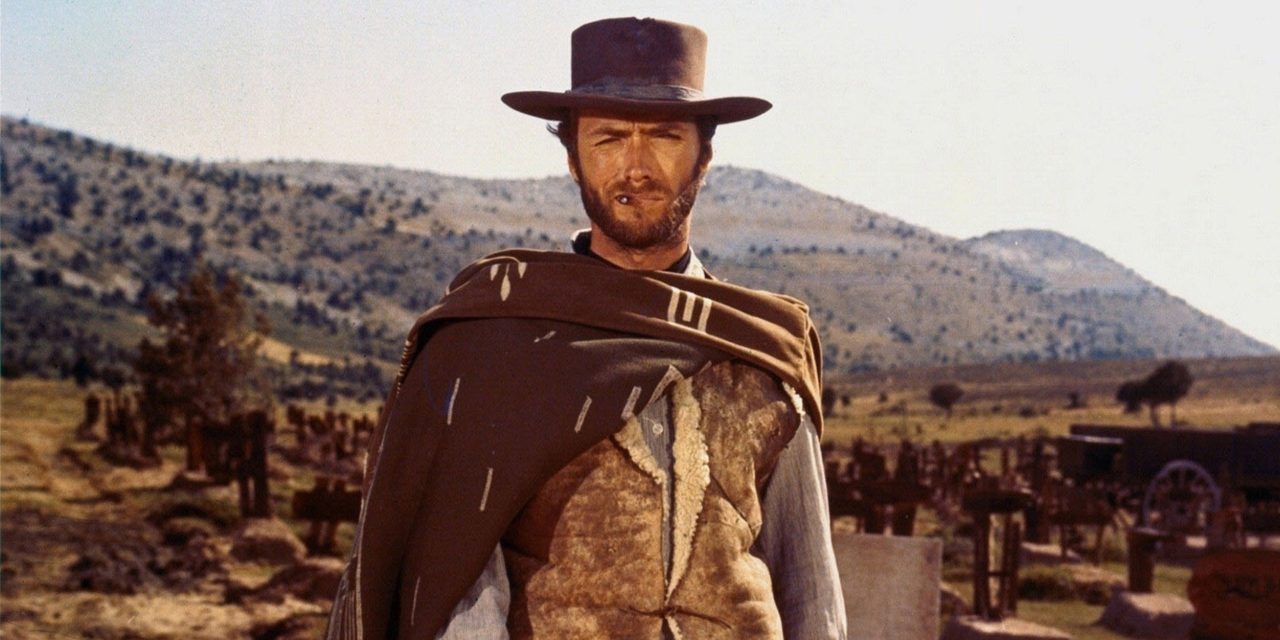
All of the other entries on this list landed their spot by virtue of how much they have going on. But in the case of The Good, the Bad and the Ugly, the reverse is true: we included it because of how little happens, instead!
See, the final showdown in Sergio Leone’s acclaimed Spaghetti Western is a three-way Mexican stand-off between three gunfighters: Clint Eastwood’s Blondie, Lee Van Cleef’s Angel Eyes and Eli Wallach’s Tuco. Should Blondie, Angel Eyes or Tuco prove too slow on the draw, it means almost certain death. And so the trio collectively bide their time, hands poised over their revolvers, waiting for the perfect moment to strike.
What makes three guys standing around so epic? It all comes down to the sense of scale Leone and cinematographer Tonino Delli Colli imbue the scene with, predominantly by cutting between extreme long shots and tight close-ups on the actors faces. This allows the tension to build and build – before too long, we’re desperate for violence to finally break out – as does Ennio Morricone’s iconic score.
Biggest moment: After several agonising minutes of unbridled tension, all three of our gunfighters finally draw their revolvers.
15. Defending The Village – Seven Samurai
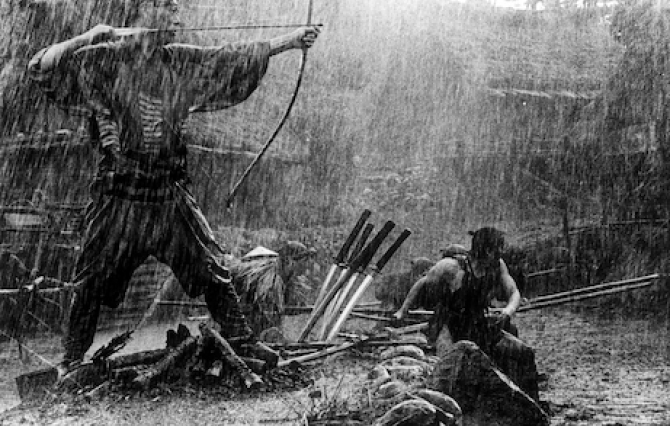
Rightly regarded as one of the greatest films of all time, Akira Kurosawa’s Seven Samurai has been unofficially re-made several times, and homaged countless more. Yet none of these imitators are a patch on the original, which represents a landmark in Japanese cinema.
Broken into two parts, Seven Samurai chronicles the efforts of a band of masterless samurai hired to protect a village from bandits intent on raiding their harvest. Much of the second part is devoted to the battle that eventually breaks out between the samurai (aided by the villagers themselves) and the bandits – and Kurosawa does a masterful job of capturing the mayhem.
The revered auteur was known for using a complicated three camera set-up, the footage from which he would personally edit himself late at night after filming wrapped for the day! The end result is an easy-to-follow, extended action scene that still boasts considerable visual panache.
Biggest moment: Their numbers drastically diminished thanks to the guerilla tactics employed by the samurai, the bandits make one last desperate push on the village – the ensuing conflict amounts to the film’s fiercest fight sequences, all as torrential rain pours down.
14. The Subway Fight – The Raid 2: Berandal
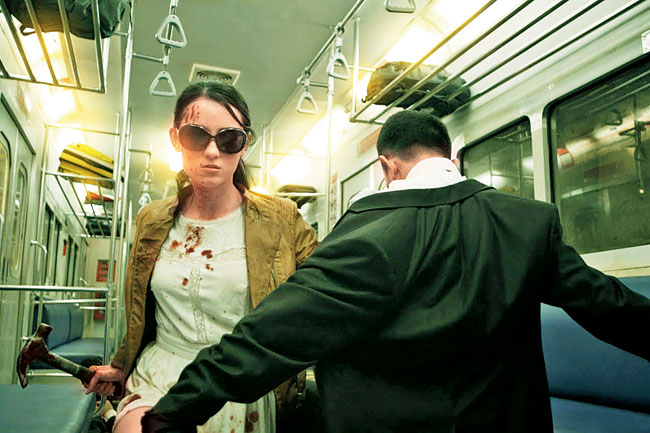
Epic brawls are a signature of the Raid franchise, so much so that narrowing the available options down to a lone entry was far from easy. But in the end, the subway fight in The Raid 2: Berandal – which boils down to one woman, two hammers and a whole lotta dead bodies left in her wake – is our number one pick.
In this scene, Julie Estelle’s deaf-mute hitwoman Alicia is tasked with wiping out Yakuza crime boss Gato’s bodyguards – which she does, in ruthless fashion. Ambushing the hired muscle on a subway car, “Hammer Girl” wastes no time eliminating her targets, with Estelle displaying a dancer’s poise and a sociopath’s detached rage in equal measure.
Director Gareth Edwards and lead cinematographer Matt Flannery more than do justice to Yayan Ruhian’s fight choreography, framing the action up-close (but not too tight), and avoiding the motion-sickness and confusion that often plagues hand-held camera work.
Biggest moment: Not a set-piece for the squeamish, the most unforgettable gag has to be Alicia’s clawhammer embedding itself in the chin of a particularly unlucky Yakuza thug – in close-up, naturally.
13. The First Day – 300
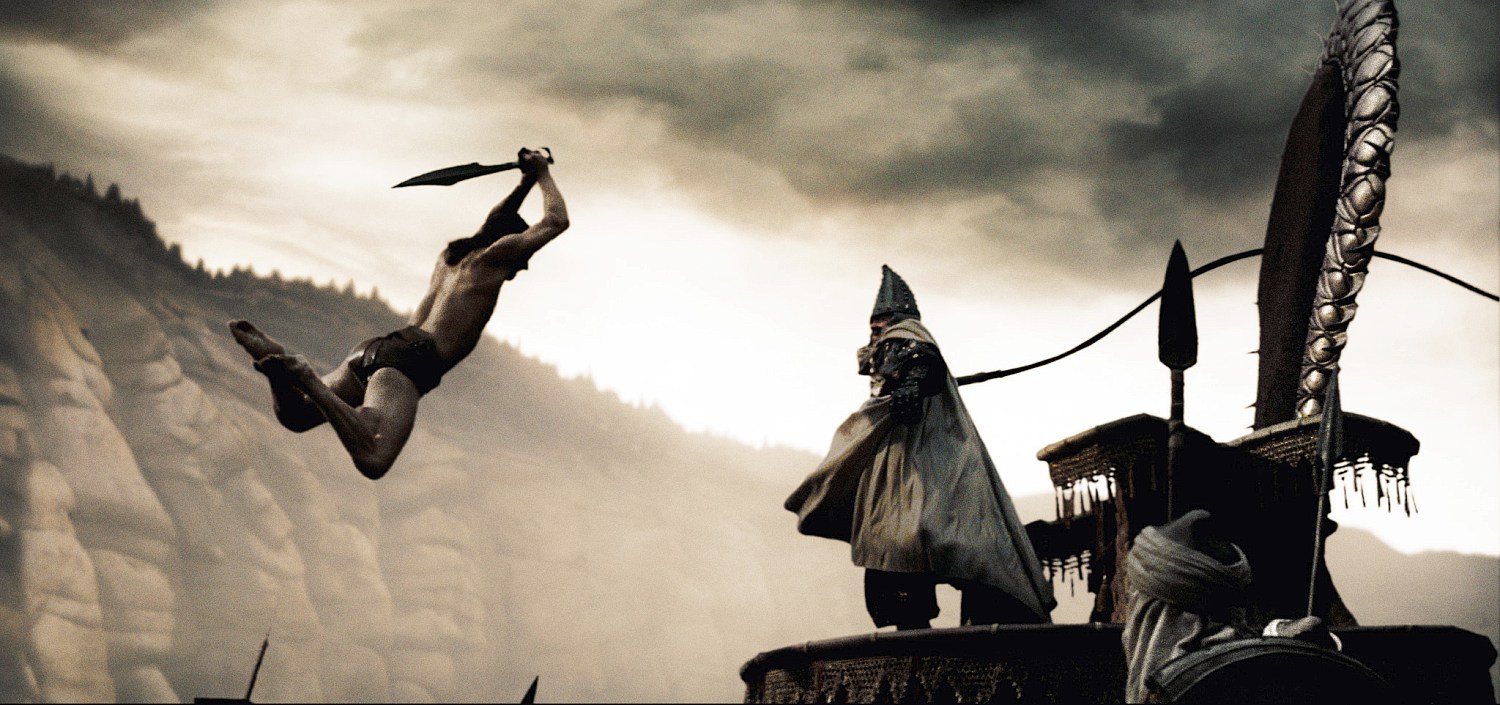
Zack Snyder’s speed-ramping, heavy-metal-blaring, ultra-stylized take on Frank Miller’s graphic novel 300 isn’t for everyone. Even so, it’s hard to ignore the visceral power of the movie’s action scenes, which (loosely) recreate the historical Battle of Thermopylae, where 300 Spartan soldiers held off a 300,000 strong Persian army for three whole days.
Things start off ludicrous and only get more OTT as they go on, and an unintentional air of campiness lingers on the periphery of every frame, threatening to undermine this ostensibly earnest, manly effort. Yet Snyder manages to tip this one over the top through sheer visual panache and showmanship – and nowhere is this more apparent than in the fighting depicted on the first day.
With Gerard Butler’s King Leonidas barking orders in his distinctive guttural tones and Tyler Bates’ choral score at histrionic pitch, the Spartans methodically carve up their adversaries. It’s all faintly ridiculous, but quite literally bloody good fun all the same.
Biggest moment: After digging deep and withstanding the Persians’ initial charge, Leonidas and his men cut loose in a testosterone-soaked orgy of frame rate-shuffling violence.
12. The Red Circle Club Shootout – John Wick

The Red Circle Club shootout in John Wick may well be the finest example of “gun fu” action choreography ever committed to film. A highly stylised fusion of gunplay and martial arts, gun fu first appeared in John Woo’s A Better Tomorrow and has appeared in numerous movies since – but directors Chad Stahelski and David Leitch take it to new heights here.
In the scene, Keanu Reeves’ retired hitman John Wick fights his way through a seemingly endless swarm of Russian gangsters, his lethal prowess filmed with equally impressive fluidity by cinematographer Jonathan Sela. The end result is a bloody yet aesthetically appealing affair that marries Western and Hong Kong cinema techniques together to dizzying effect.
Best moment: The very first time we see Wick gracefully segue from grappling with a hapless goon to popping a cap in his head – which immediately signposts the gleefully unorthodox display that follows.
11. Melee At The Inn – Crouching Tiger, Hidden Dragon
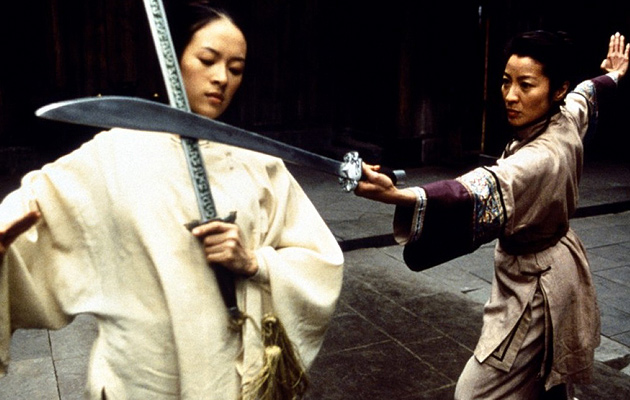
Ang Lee’s Crouching Tiger, Hidden Dragon brought the Chinese wuxia genre of films to the attention of mainstream Western audiences and critics…and how! Based on Wang Dulu’s classic novel of the same name, this Academy Award-winning movie is filled with numerous lyrical set pieces.
Think duellists trading blows atop swaying bamboo trees and warriors embarking on balletic rooftop chases – the wire work for which was largely performed by the actors themselves. All of these sequences are highly memorable in their own right, but the most flamboyant (and therefore most epic) has to be the melee at the inn towards the end of the second act.
Here, Zhang Ziyi’s cocky martial arts prodigy Jen Yu – armed with the mystical sword, Green Destiny – makes short work of an entire band of warriors. Indeed, not only does Jen utterly outclass her foes, she makes sure they know it, talking smack the entire time!
Cinematographer Peter Pau captures Ziyi’s every graceful yet deadly movement beautifully, deserving particular props for his reliance on smooth tracking shots wherever possible. Alongside the rest of the fights in Crouching Tiger, the inn melee served as a wake-up call to blockbuster filmmakers in Hollywood that it was time to up their game.
Biggest moment: Jen comes spiralling up from the ground floor of the inn to the second level like a whirling dervish, and quickly makes it clear her claim to the title “Invincible Sword Goddess” is legit.